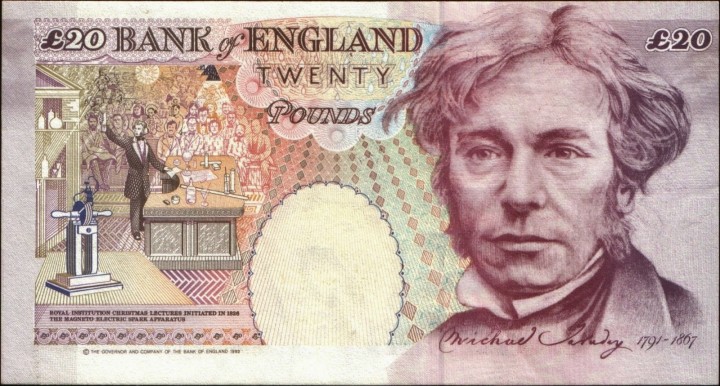Michael Faraday Never Really Cared About Capacitors - a Short Biography
on
The farad
Originally the farad was suggested as a unit of electrical charge, but eventually it became the unit of electrical capacitance in 1873 when the newly formed Committee for the Selection and Nomenclature of Dynamical and Electrical Units – then including Thomson (the future Lord Kelvin), Maxwell and Siemens – published its first report.Ohma = galvat × volt
It was Latimer Clark, together with Charles Bright, who, in 1861, had proposed the farad as a unit for electrical charge together with the ohma for potential, the volt for resistance and the galvat for current. If they had had it their way, today we would say that a current of one galvat through a resistor of one volt produces an ohmage of one ohma: Ω = I × R.
Latimer Clark & Charles Bright?
Now why did Latimer Clark and Charles Bright propose units anyway? Who were they to be taken seriously by the British Association for the Advancement of Science?
Delving into history, we quickly discover that Latimer was the brains of the couple whereas Charles had the money. Latimer’s career took off when he became chief engineer at the Electric (and International) Telegraph Company. One major concern of telegraph companies at that time were the cables and especially their losses.
No unified system of electrical units
At the ‘electrical’ level everything was not yet fully understood, and things were turning even more complicated by a lack of standardization; every engineer measured and categorized cable resistance in his own way. Having acquired a lot of expertise on cables, Latimer entered a partnership with Charles Bright, who had completed the first Atlantic cable in 1858.
Although this cable didn’t last long, Charles continued laying submarine cables and was involved in laying the first truly lasting transatlantic cable. The pair set out to improve submarine cables and found that a unified system of electrical units would come in handy. Since there wasn’t one, they invented it.
Back to the future
Latimer actually was quite a brilliant mind. In 1854 he took out a patent on pneumatic tubes and became involved in a Hyperloop-like project for dispatching parcels in London. (If that doesn’t sound like ‘Back to the future’, what does?) His moment of glory came in 1895 when the very stable 1.4328 V battery that he had invented, the Clark cell, was elected international voltage standard and successfully held that position for over a decade.
Michael Faraday was just being a genius
And Michael Faraday in all this? Ah, he was just being a genius, inventing cool theories about lots of stuff, some of which happened to be related to electrical charge and submarine cables. Latimer knew Michael, having presented some of his experiments to him in 1853 or 54, and, possibly as a sign of admiration, proposed the farad as a unit in return. And it stuck.More biographies
Alessandro VoltaAndré-Marie Ampere
Georg Simon Ohm
James Watt


Discussion (0 comments)